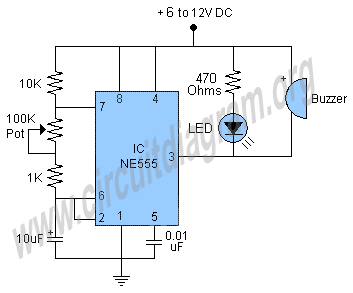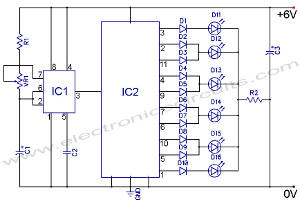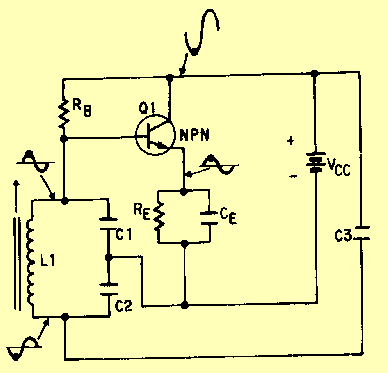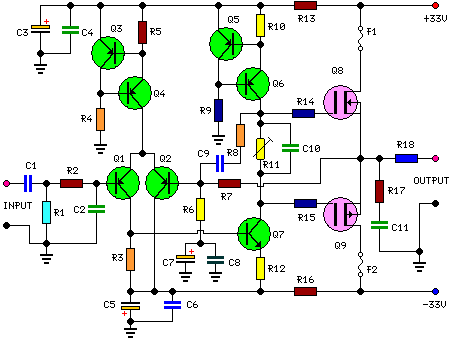
beeper circuit

This schematic illustrates a beeper circuit designed to produce a continuous beep sound while simultaneously flashing an LED.
The beeper circuit typically consists of a few key components: a sound-generating device (such as a piezo buzzer), an LED for visual indication, a resistor to limit current, and a power source. The circuit operates by driving the buzzer at a specific frequency to create the beep sound, while the LED is connected in parallel to the buzzer to emit light in sync with the sound.
In a typical configuration, the circuit may utilize a 555 timer IC in astable mode. This configuration allows the timer to oscillate between high and low states, generating a square wave output. The frequency of the oscillation can be adjusted by changing the values of the resistors and capacitors connected to the timer.
The piezo buzzer is connected to the output of the 555 timer, which causes it to vibrate and produce sound waves. The LED is connected in series with a current-limiting resistor, ensuring that it receives the appropriate voltage and current to operate without damage. As the timer output toggles, the LED will turn on and off in sync with the buzzer, providing a visual cue that complements the auditory signal.
Power to the circuit is typically supplied by a battery or a DC power source, ensuring that the beeper and LED receive adequate voltage for operation. The design can be compact and efficient, making it suitable for applications such as alarms, notifications, or simple signaling devices.Here is a schematic of a beeper circuit. The circuit will generate a continuous beep-beep sound signal with flashing an LED.. 🔗 External reference
The beeper circuit typically consists of a few key components: a sound-generating device (such as a piezo buzzer), an LED for visual indication, a resistor to limit current, and a power source. The circuit operates by driving the buzzer at a specific frequency to create the beep sound, while the LED is connected in parallel to the buzzer to emit light in sync with the sound.
In a typical configuration, the circuit may utilize a 555 timer IC in astable mode. This configuration allows the timer to oscillate between high and low states, generating a square wave output. The frequency of the oscillation can be adjusted by changing the values of the resistors and capacitors connected to the timer.
The piezo buzzer is connected to the output of the 555 timer, which causes it to vibrate and produce sound waves. The LED is connected in series with a current-limiting resistor, ensuring that it receives the appropriate voltage and current to operate without damage. As the timer output toggles, the LED will turn on and off in sync with the buzzer, providing a visual cue that complements the auditory signal.
Power to the circuit is typically supplied by a battery or a DC power source, ensuring that the beeper and LED receive adequate voltage for operation. The design can be compact and efficient, making it suitable for applications such as alarms, notifications, or simple signaling devices.Here is a schematic of a beeper circuit. The circuit will generate a continuous beep-beep sound signal with flashing an LED.. 🔗 External reference





